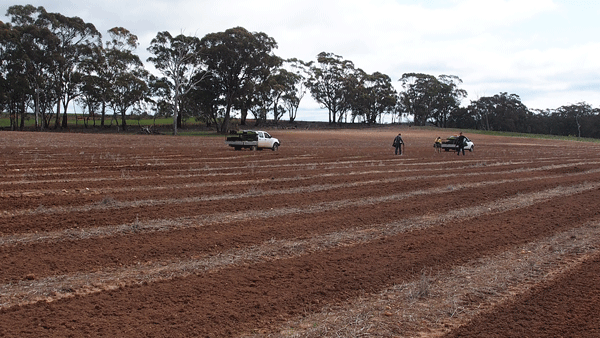
We are assuming we have a bare paddock to start with that has some sort of agricultural history.
The idea is plant the Leptospermum in separated rows so they ultimately form hedgerows. The spacing of these rows will vary but in any event they will need to be ripped unless the soil is very sandy or very rocky or if there is some other impediment such as steep gradient or swampy conditions preventing access by machinery.
All those aside, the ripping will need to be around 30cm deep and undertaken at the dry time of the year. It is likely that ripping will bring clods of soil to the surface and these need to be broken up by driving back along the rows with a tractor wheel. A second pass with the ripper set at a shallow depth will tickle up the soil and make a planting bed without air pockets etc.
The site can be left until rain arrives seasonally and this, of course, will vary from region to region. The arrival of rain will stimulate the germination of a range of weeds and grasses, and this is exacerbated but the disturbance to the top soils by the earlier ripping.
These weeds must be controlled and continued to be controlled up to, and following planting else, the entire project will be in jeopardy. This cannot be over-emphasised.
Weed control can be maintained up to planting time by the cultivation of a strip 1.5m wide or spraying a 1.5m strip with glyphosate herbicide.
Pre-emergent herbicides, of which there a many, can be applied to give residual control to prevent most weed species from germinating. This approach should be undertaken with caution particularly where it involves the use of old-fashioned residual herbicides such as Simazine.
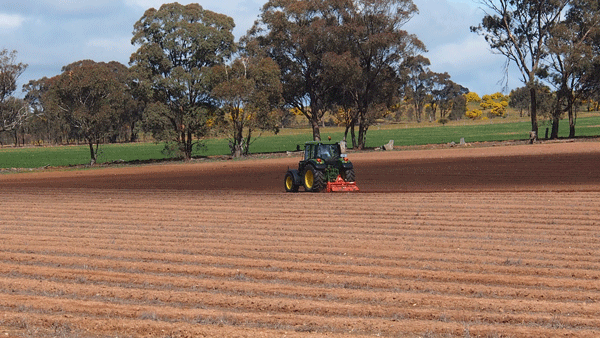 Preparing planting lines using a rear mounted rotary hoe.
Preparing planting lines using a rear mounted rotary hoe.
There are some pre-emergent herbicide products that have a high margin of safety, are relatively inexpensive in the grand scheme of things and can provide up to 12 months control of virtually all grasses and weeds.
The products Eucmix preplant and Eucmix GR have the active ingredients 880g/kg Terbacil + 40g/kg Sulfometuron Methyl and have been used extensively in the plantation forestry industry for many years and are deemed safe to use on a wide range of Australian tree and shrub species.
Problem, or escape weeds, can usually be covered by incorporating appropriate complimentary additives that specifically target those species
The preplant˜ form is soluble in water and designed for broadacre applications as can be seen in the below image where it has been sprayed along the cultivated lines in 1.5m wide strips.
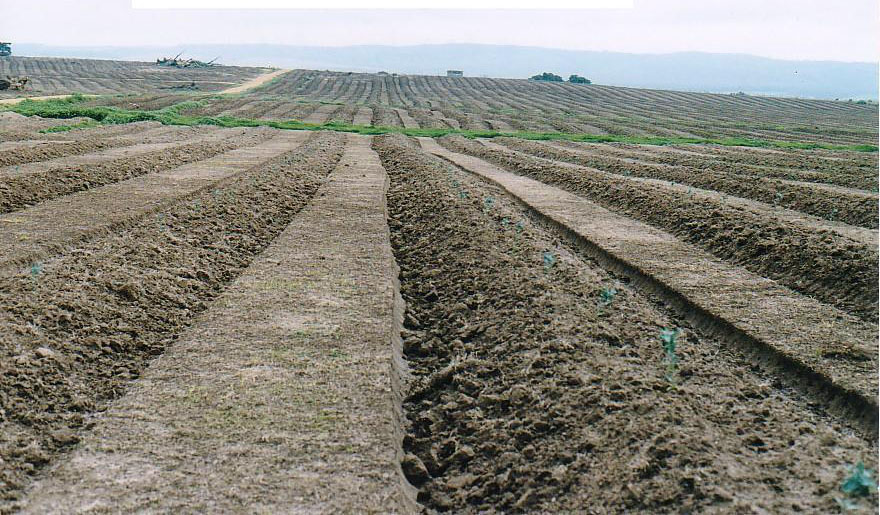
Tasmanian blue gum plantation site preparation with Eucmix preplant. Note the newly planted seedlings
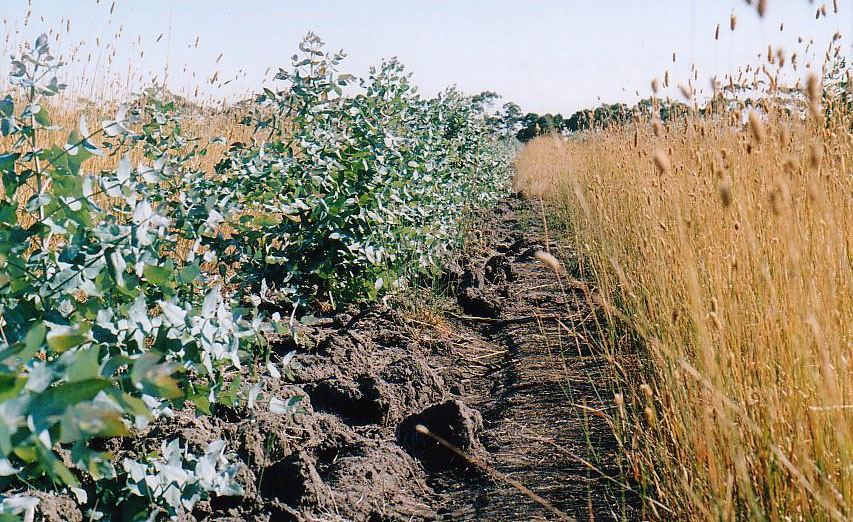
The residual effect of the treatment can be clearly seen nearly 12 months later.
The GR (granular) form of the product is designed for smaller projects where the granules are applied by hand with metering applicator called a Weed-A-Metre that dispenses fine granules over a square metre or so. This product is applied after the seedlings have been planted whereas the preplantâ form is applied 30 days prior to planting.
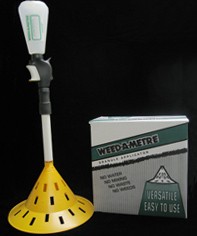
Read the trial results:Â herbicide-trial-results. (Sorry the pdf is in print-off format !)
More recent Leptospermum specific trials
The above trials relate to primarily Eucalyptus species.
In late 2016 Macspred Pty Ltd, following requests from myself, generously commissioned independent, comprehensive greenhouse trials specifically aimed at determining the tolerance of a number of Leptospermum species to pre emergent herbicide treatments with Euca PP. There was a Eucalypt species (E. polybracteata) included in the trial.
This trial was undertaken by Dr Peter Boutsalis of Plant Science Consulting P/L.
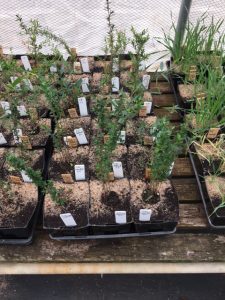
The results have been presented in a the report titled REPORT- TRIAL 1633A-Bioequivalence of Trimac or Eucamix PP
This report concludes that it appropriate to use this product to give long-term weed control in Leptospermum plantations.
(Technical enquiries to Mark Francis, Macspred . 0407 607 989)
Other Issues
The use of herbicides generally may be inappropriate in many instances for a range of reasons such as observing organic status protocols.
Repeat cultivation with a rotary hoe over the rip lines (earlier picture) will certainly control annual weeds in the short-term. Techniques like solarisation with sheets of plastic are also an effective method of weed control and partial weed seed sterilisation but can only be considered on a relatively small-scale.
The main problem by far is the presence of perennial grass, in particular, Kikuyu and to a lesser extent couch. There are other rampant pest plants but these appear to be the most common and aggressive and they proliferate all over the country.
Fortunately, these grasses can be controlled to some extent with a program of herbicides such as glyphosate (pre-planting full-spectrum systemic),Fluazifop (post planting grass selective systemic) and preemergent herbicide to prevent seed from germinating.
These treatments are quite effective whereas cultivation as a means of control with these grasses is less than somewhat ineffective. Cultivation stimulates the seed bank in the soil and breaks up the segments of roots and the above ground plant portions to make multitudes of new plantlets that will go on to produce their own roots and new shoots.
Unfortunately, this is a real dilemma as the infestations of Kikuyu, in particular, are just everywhere.
Its Hobsons choice here because nothing will compete with a thick live mat of Kikuyu that is growing vigorously and suffocating everything else in its way.